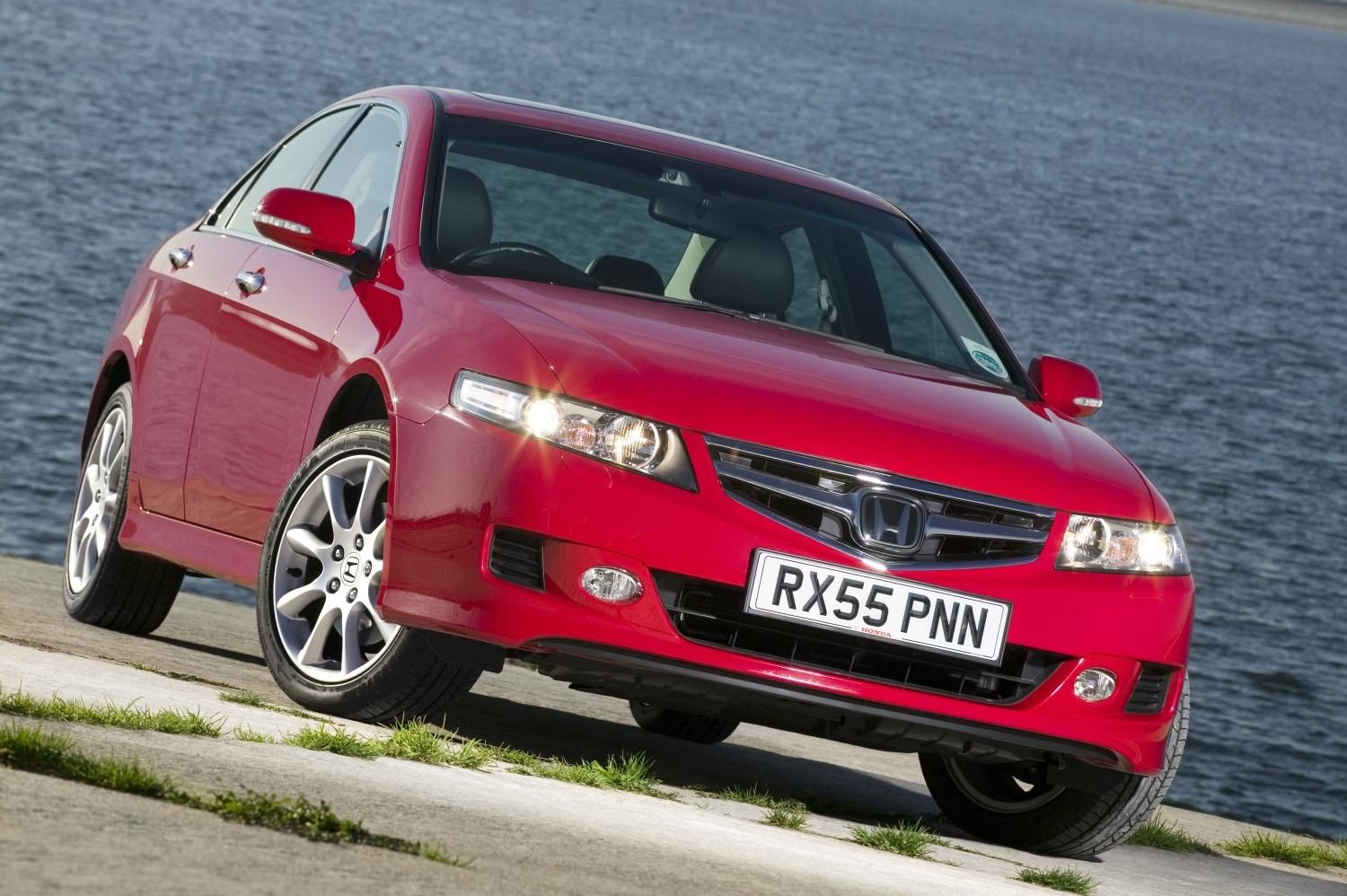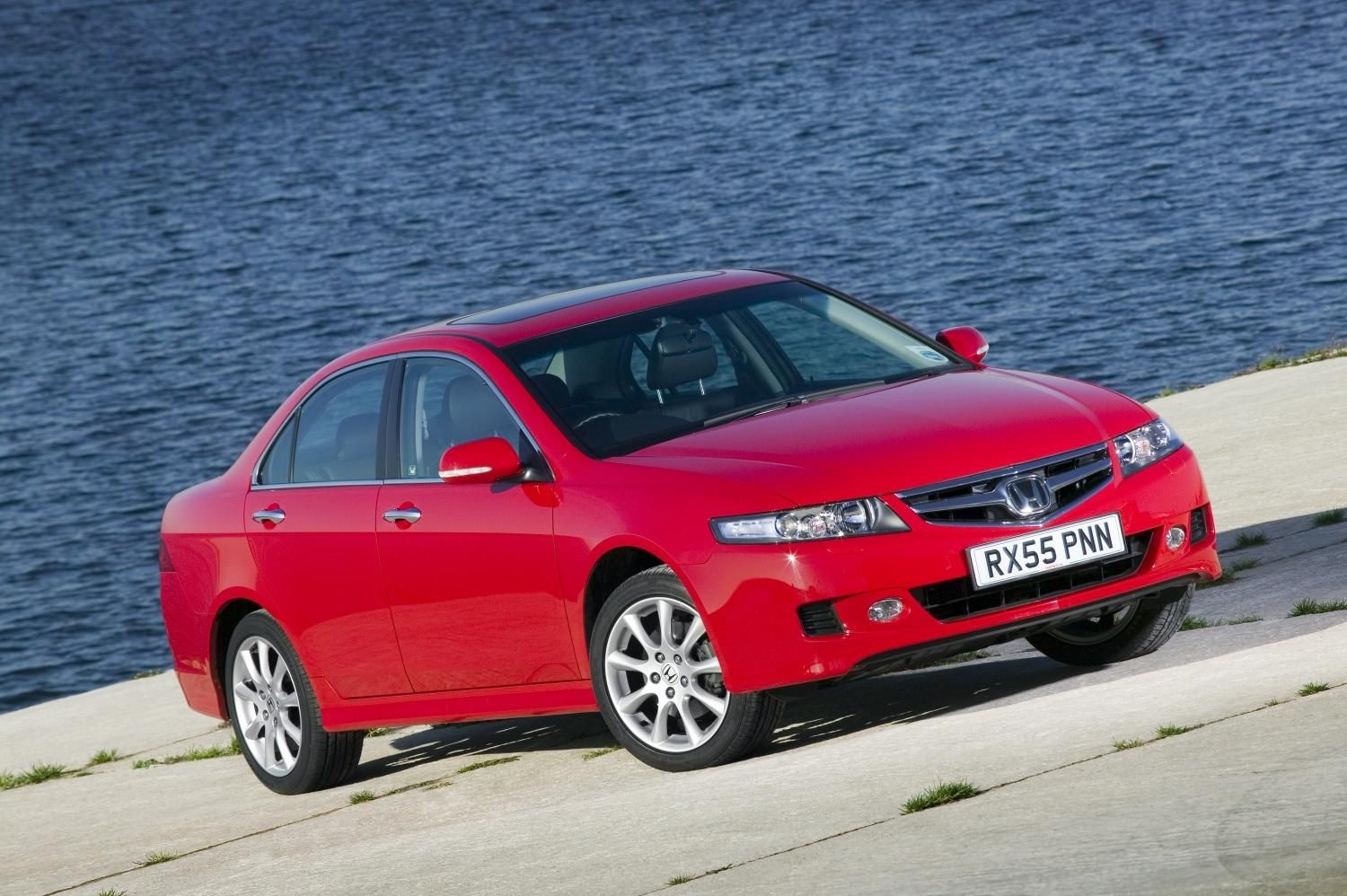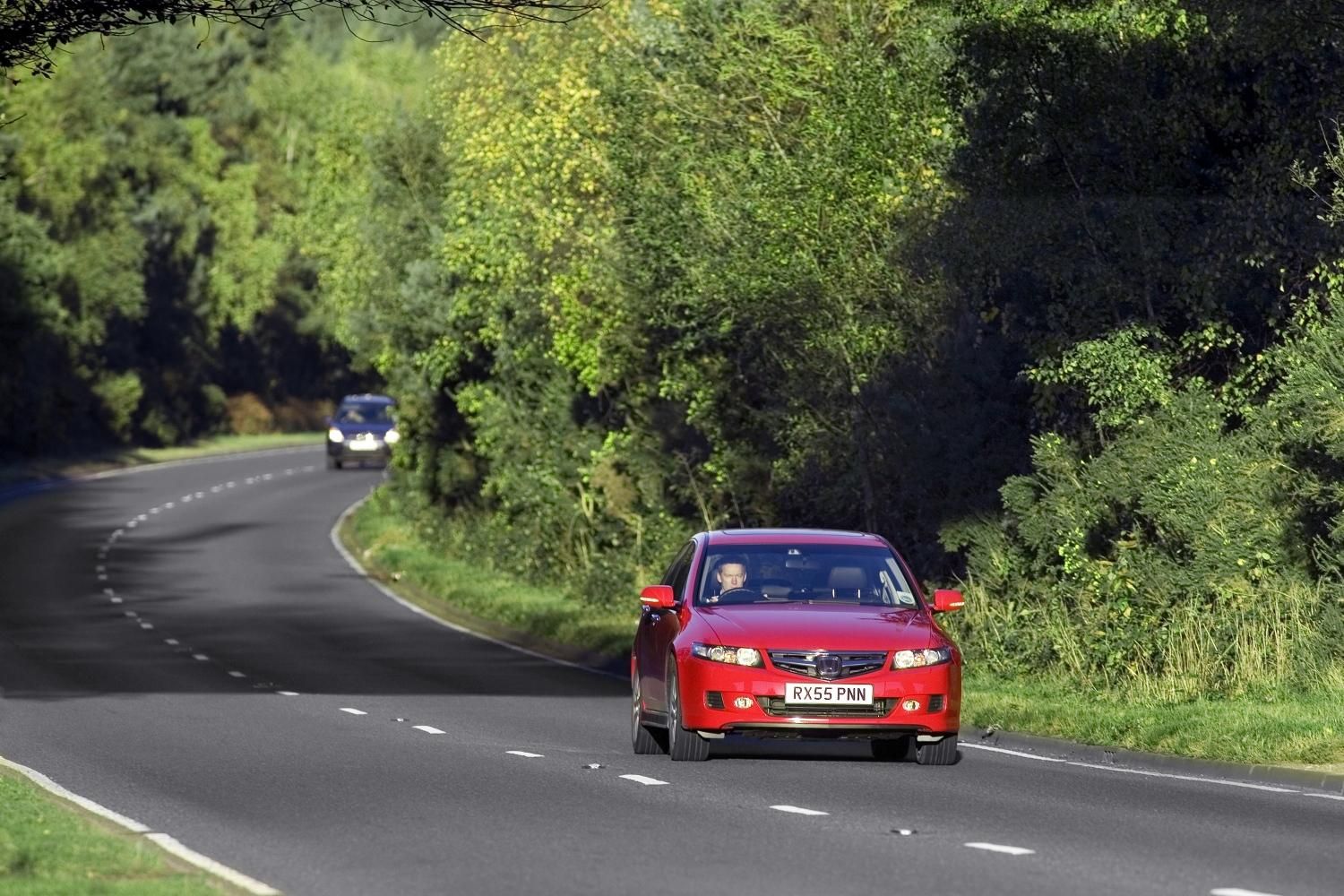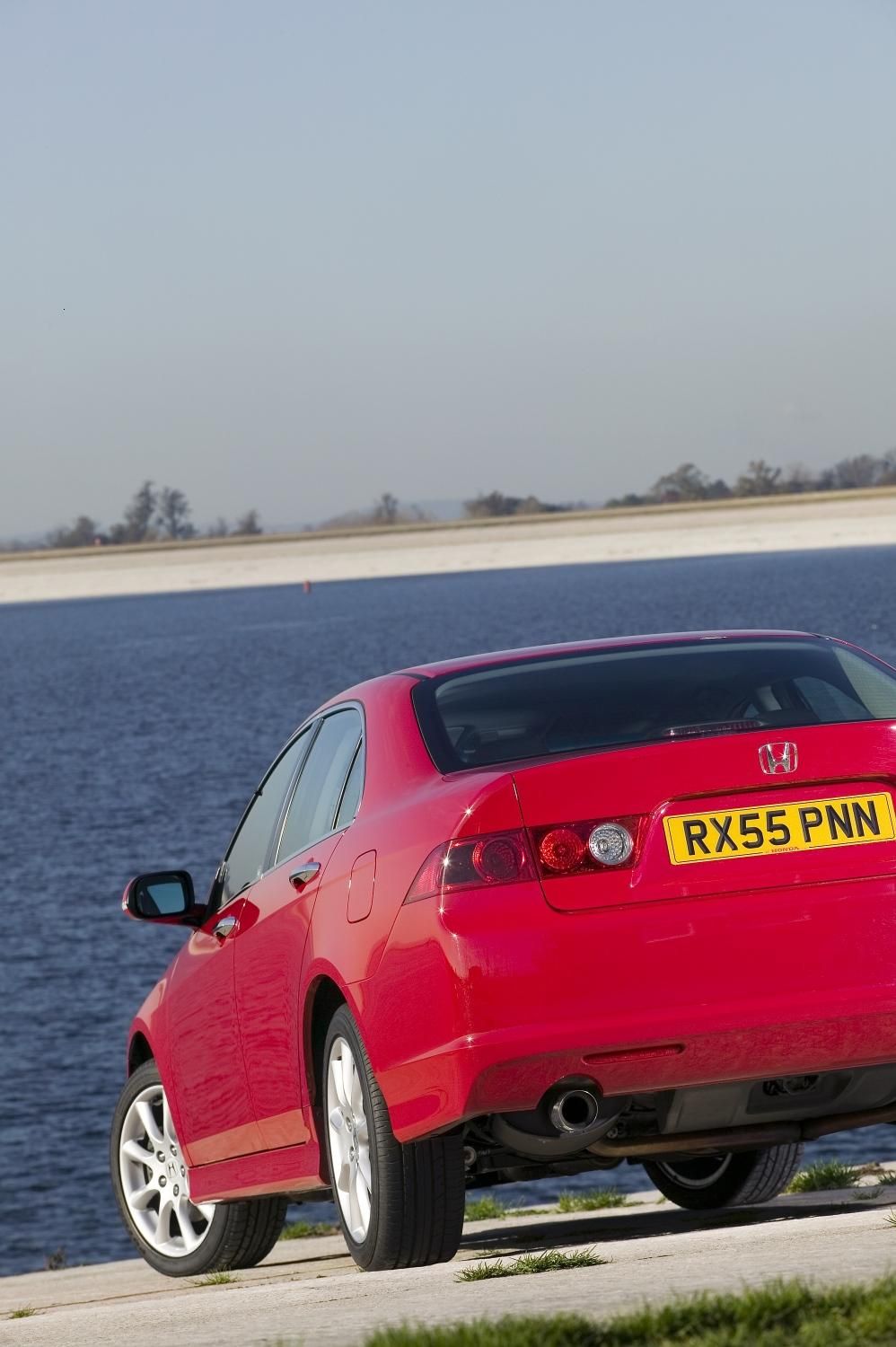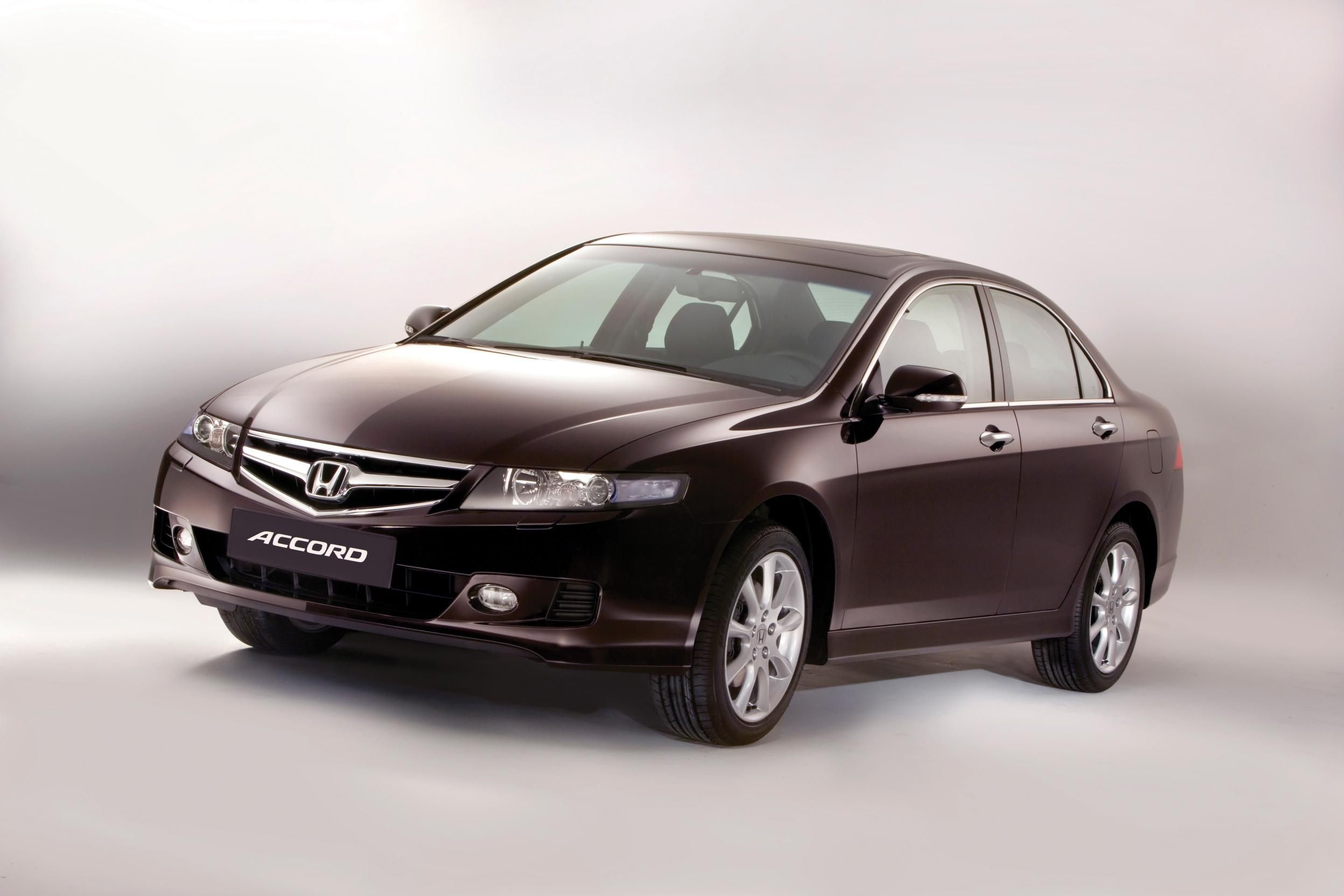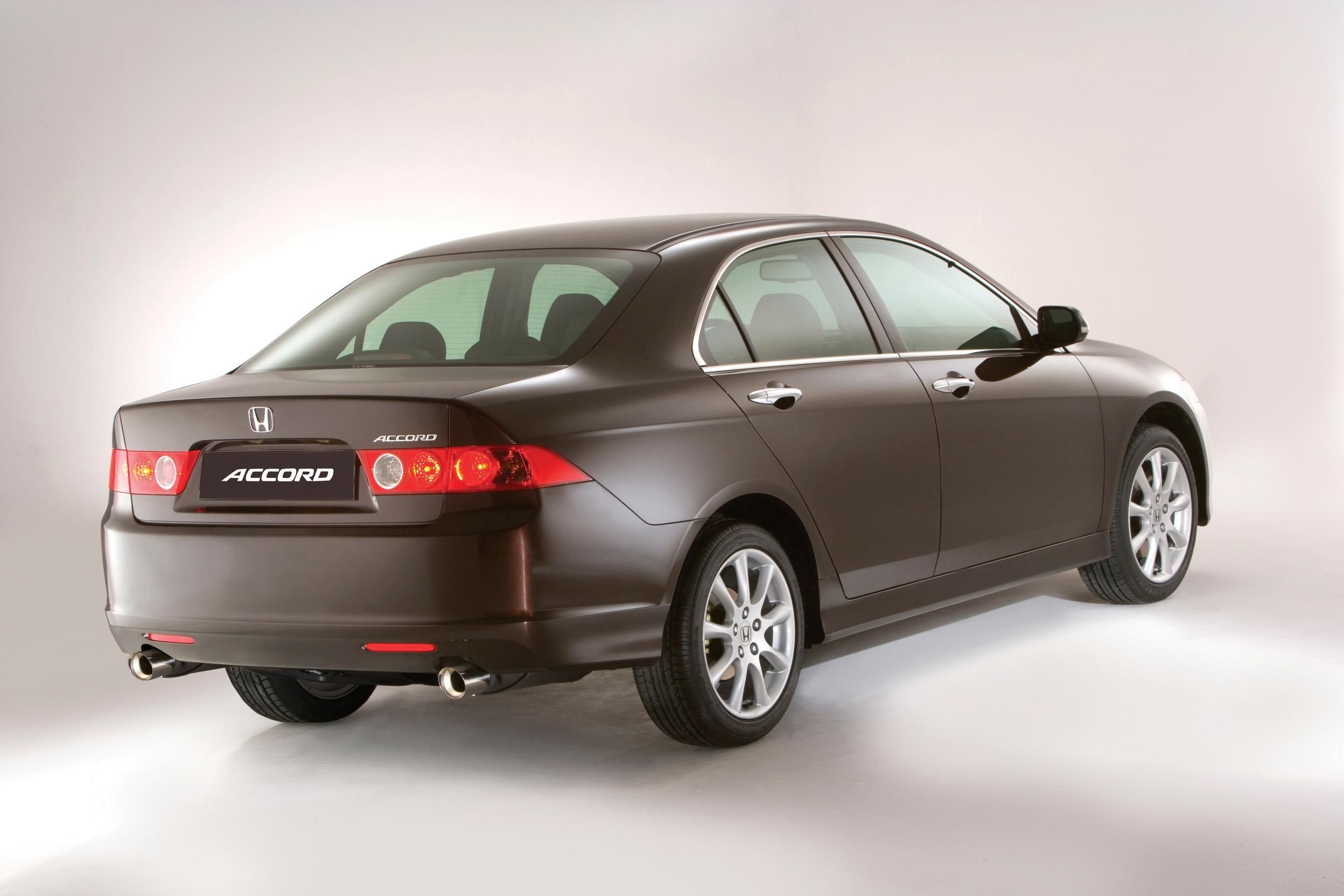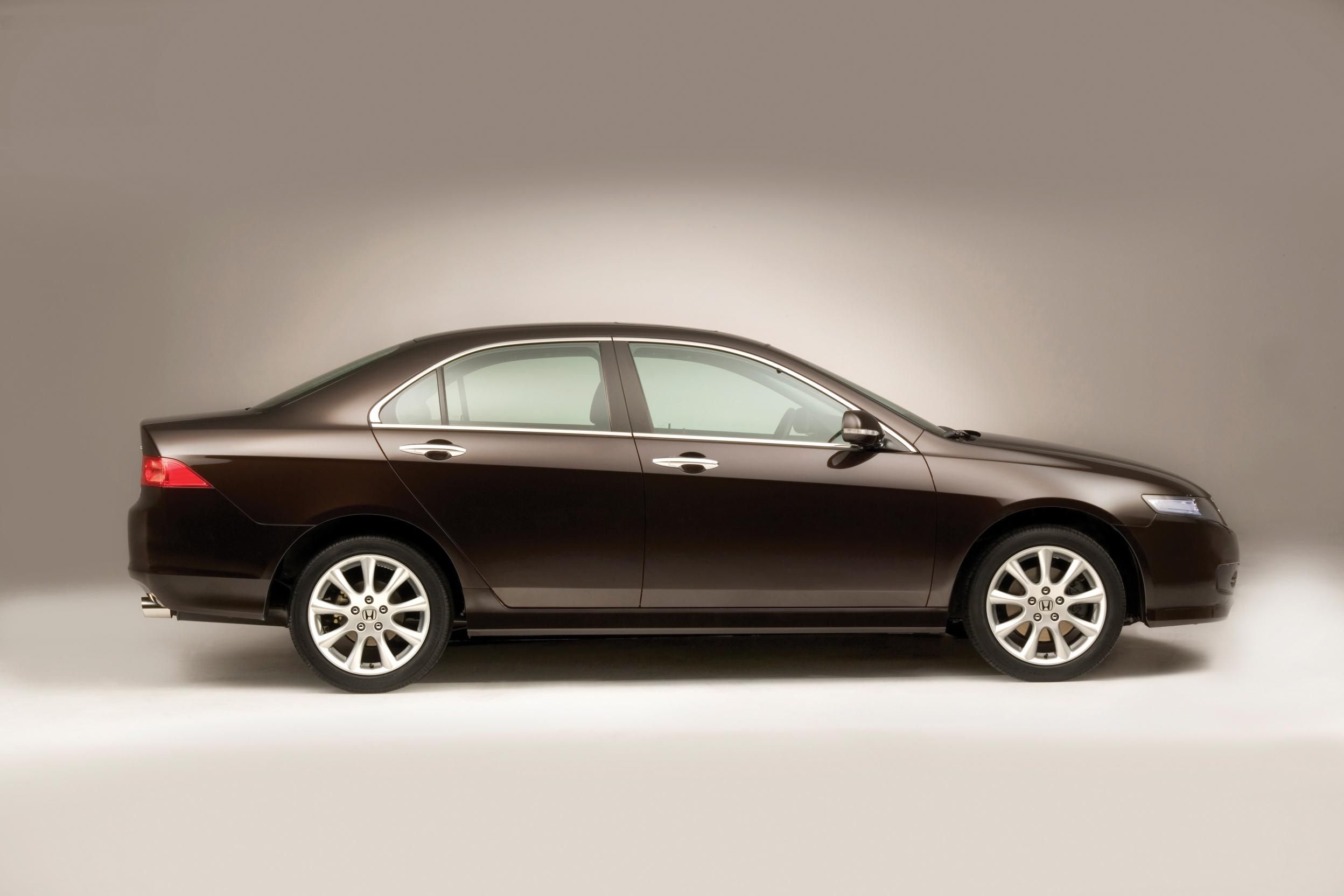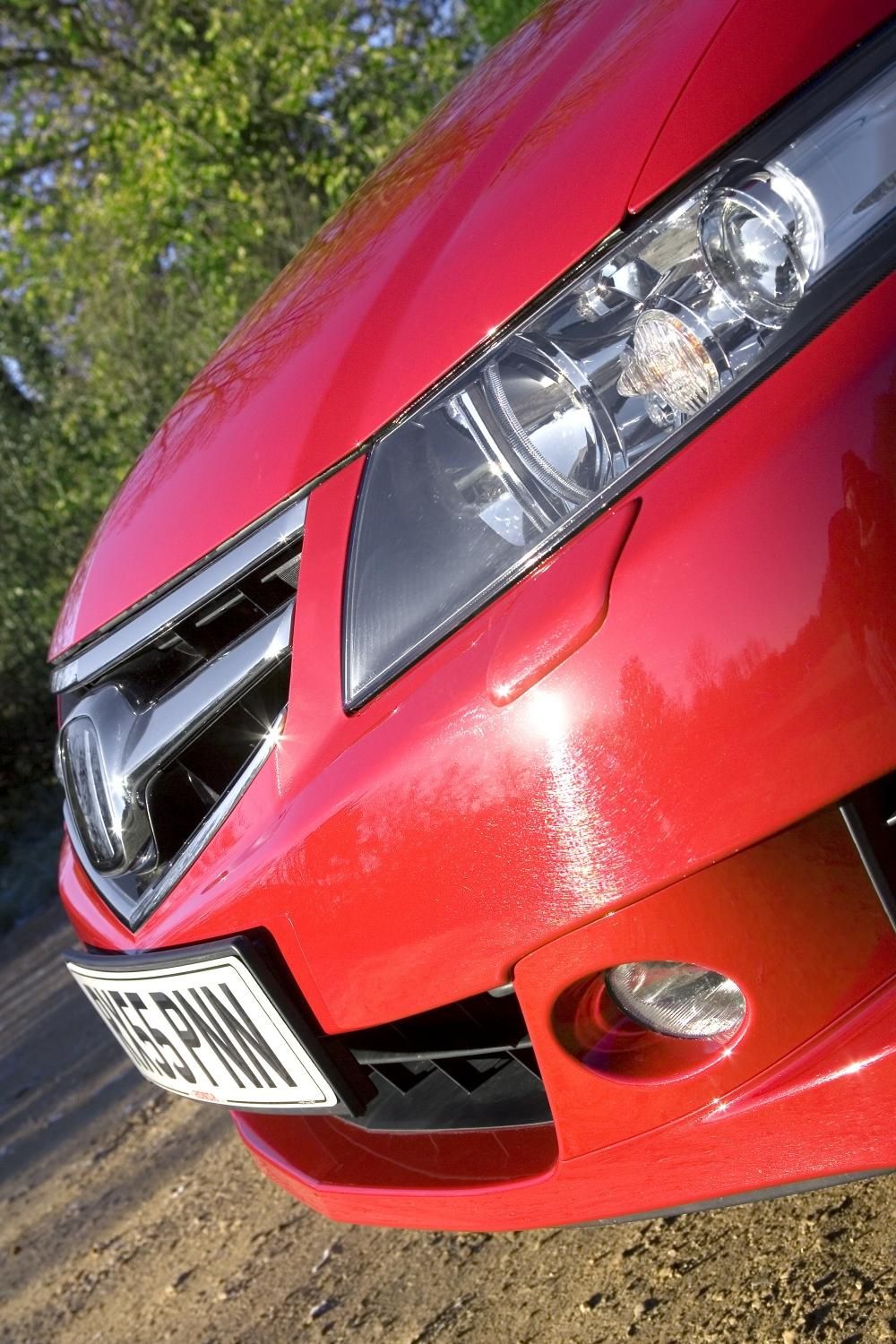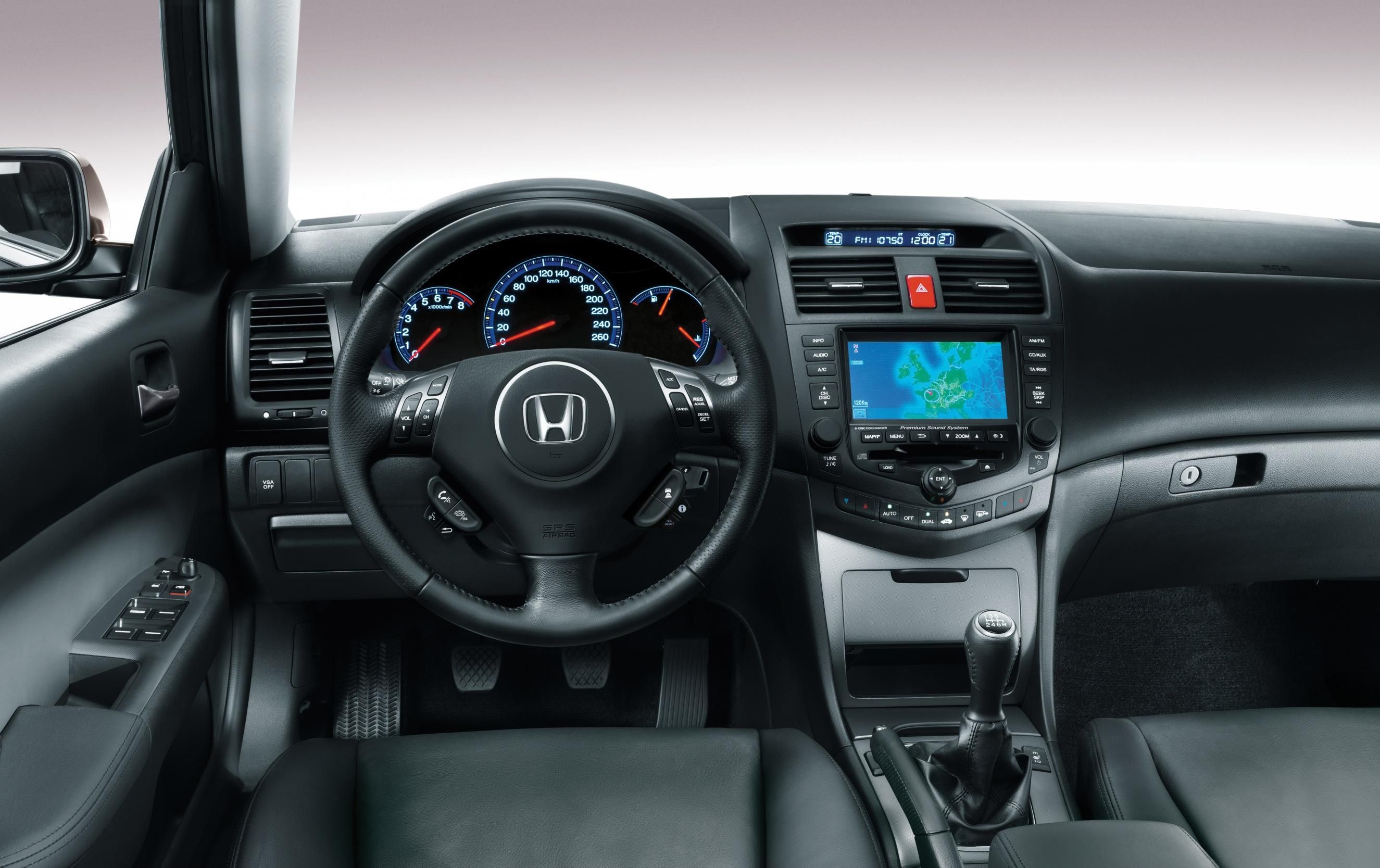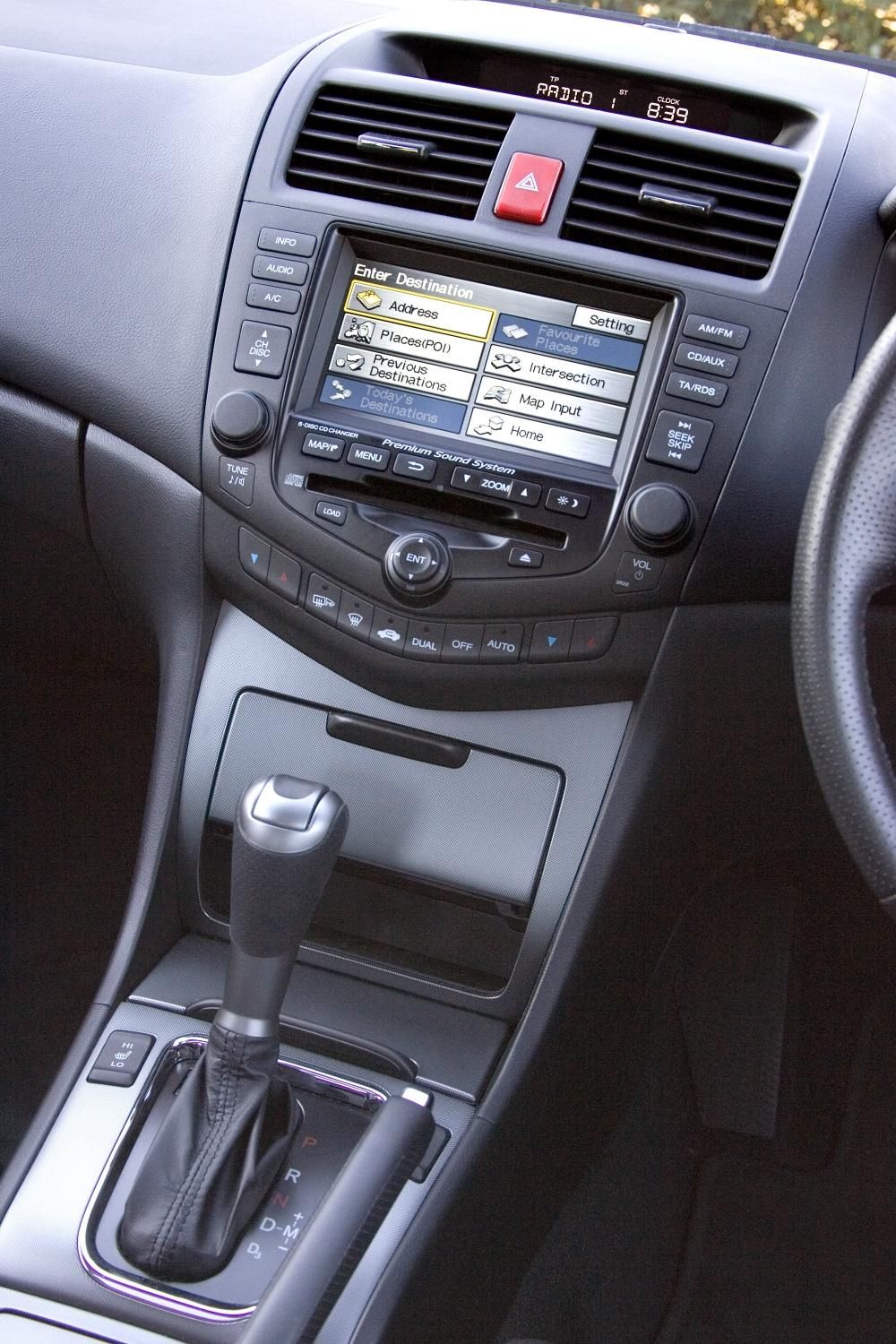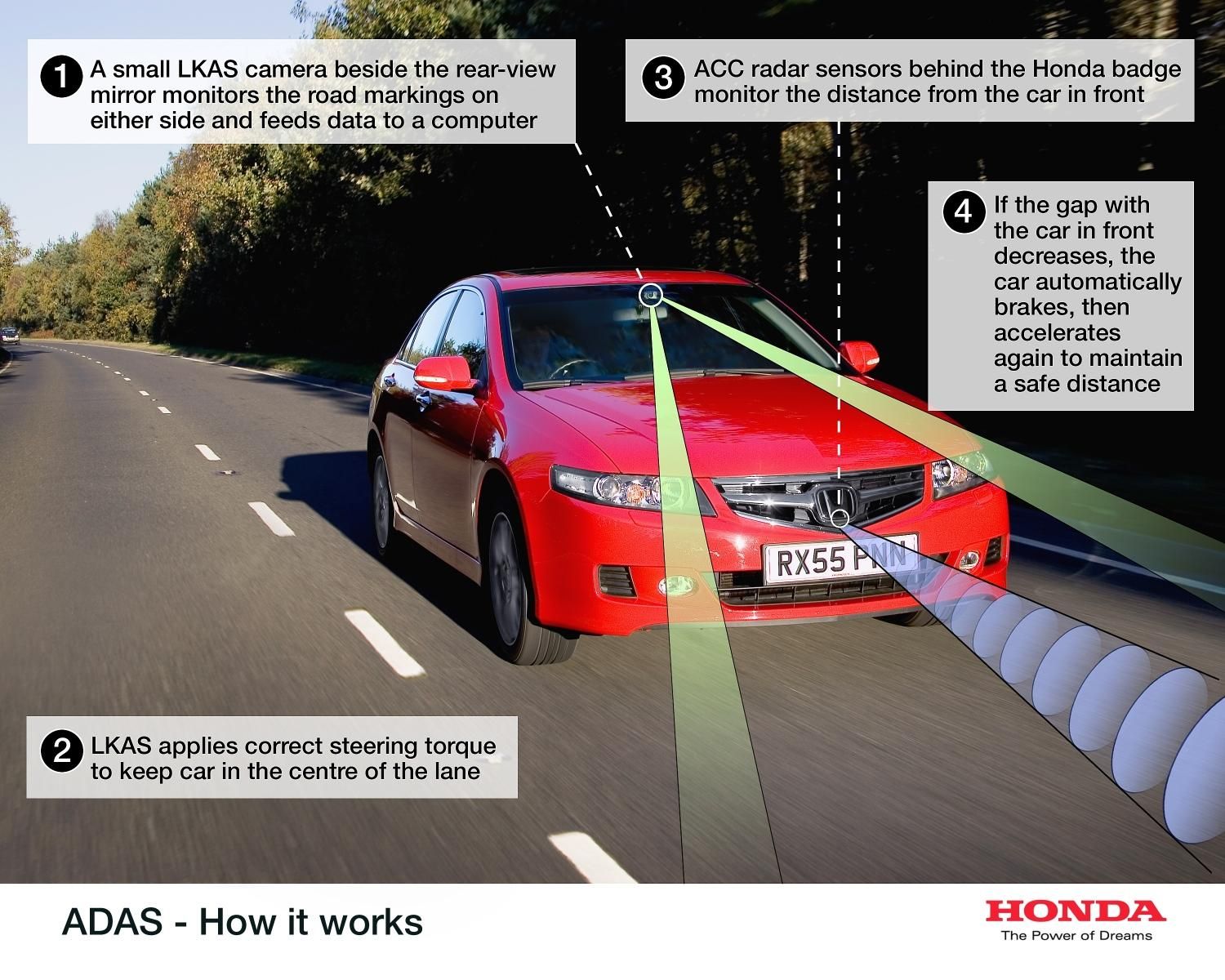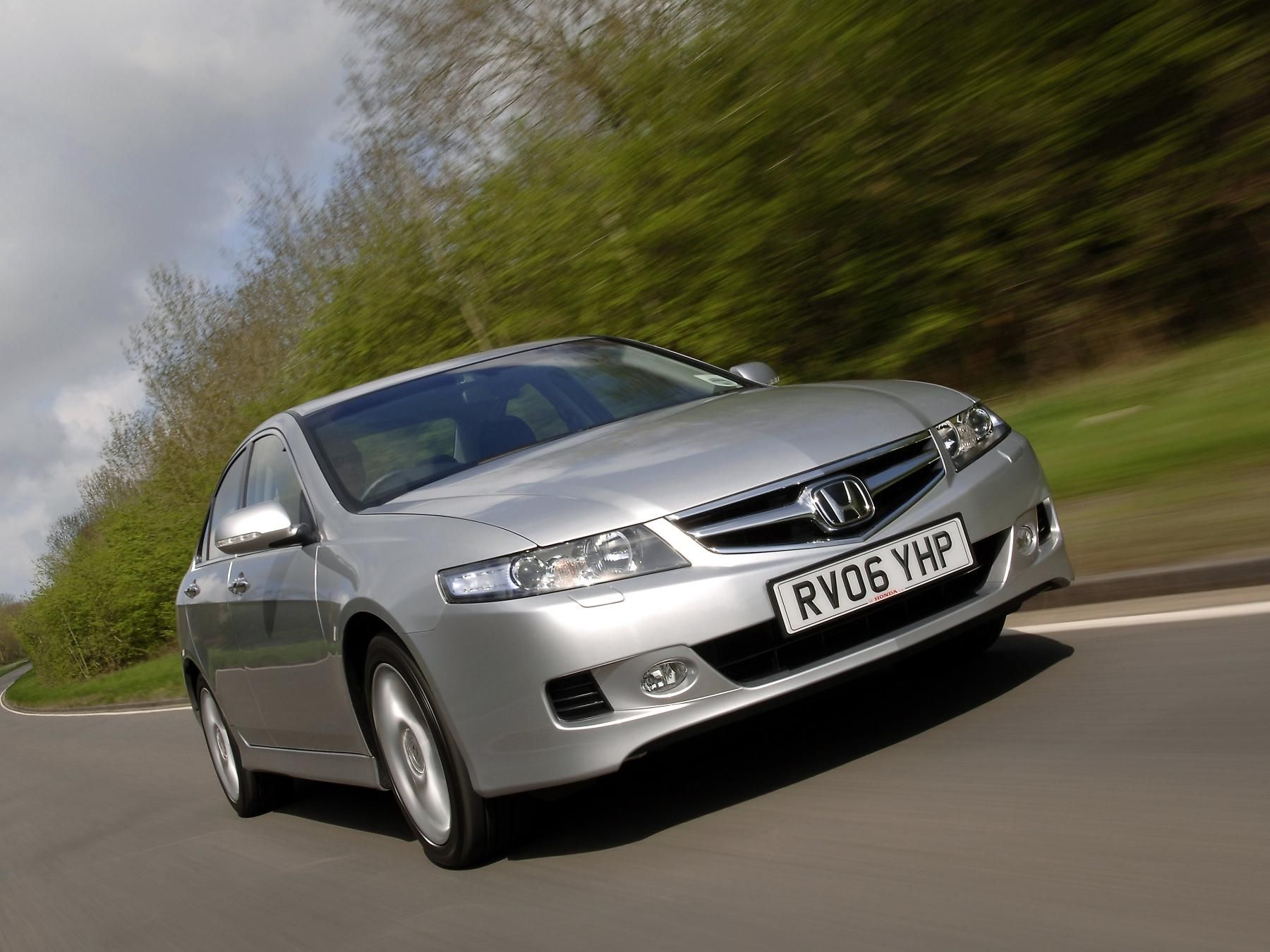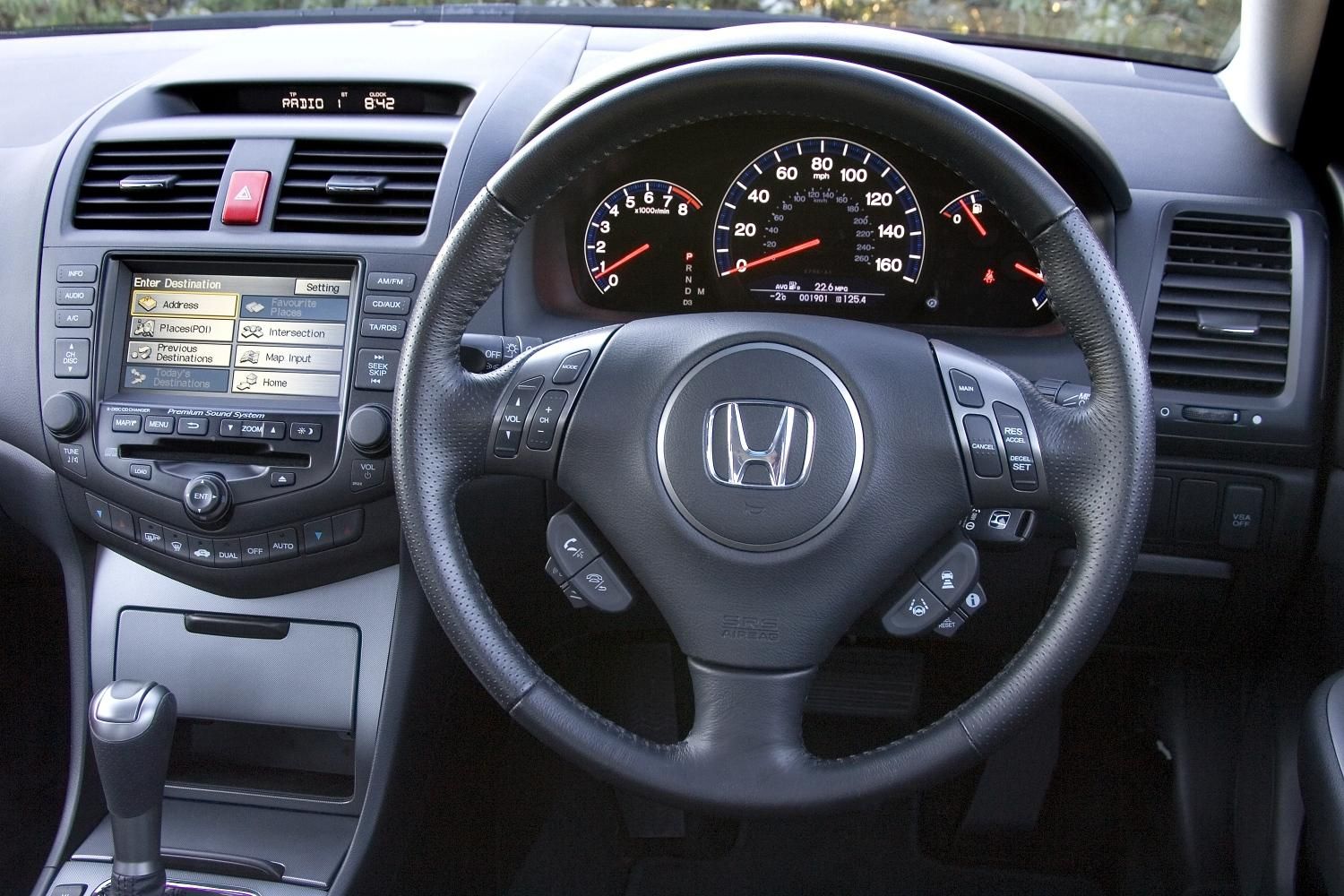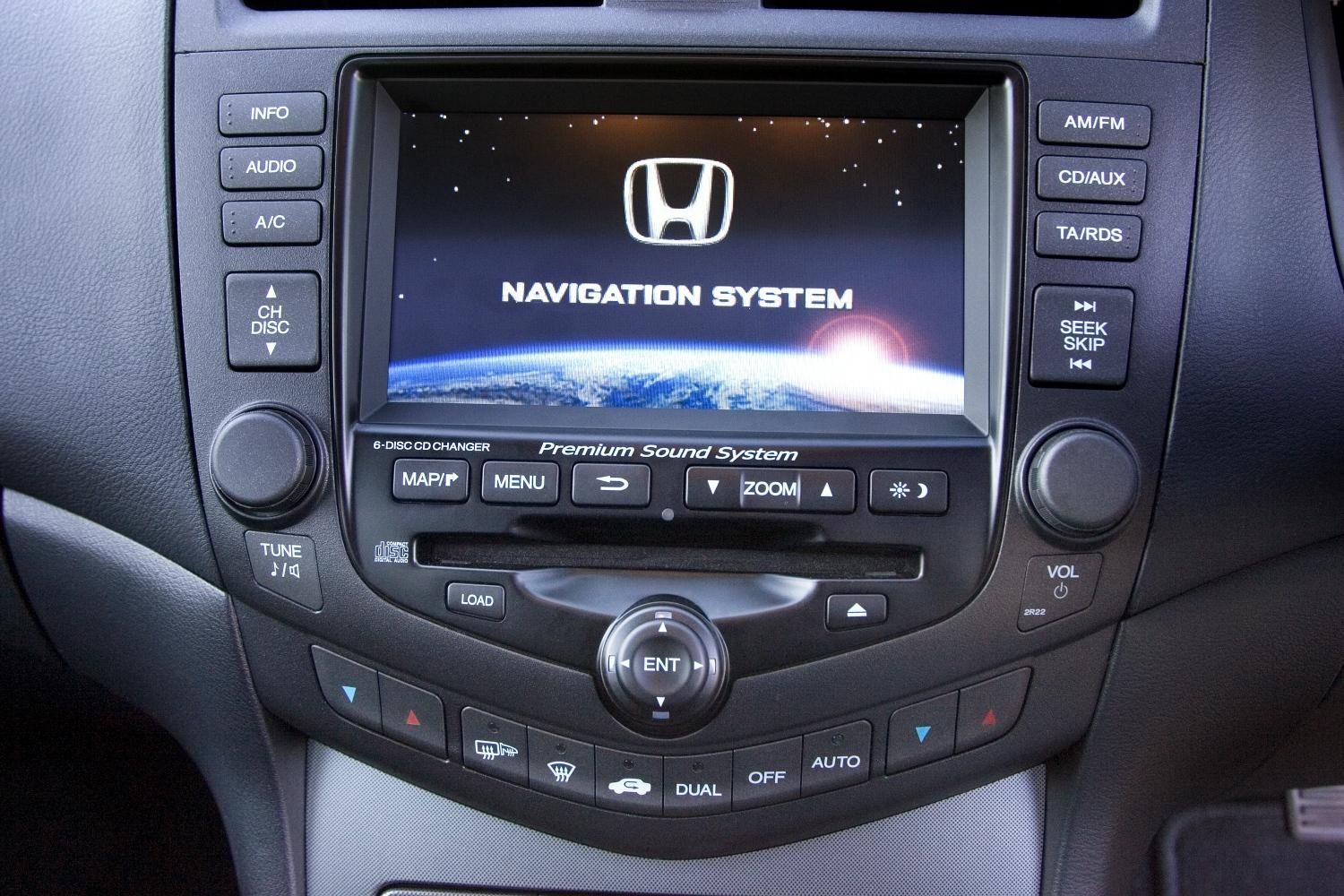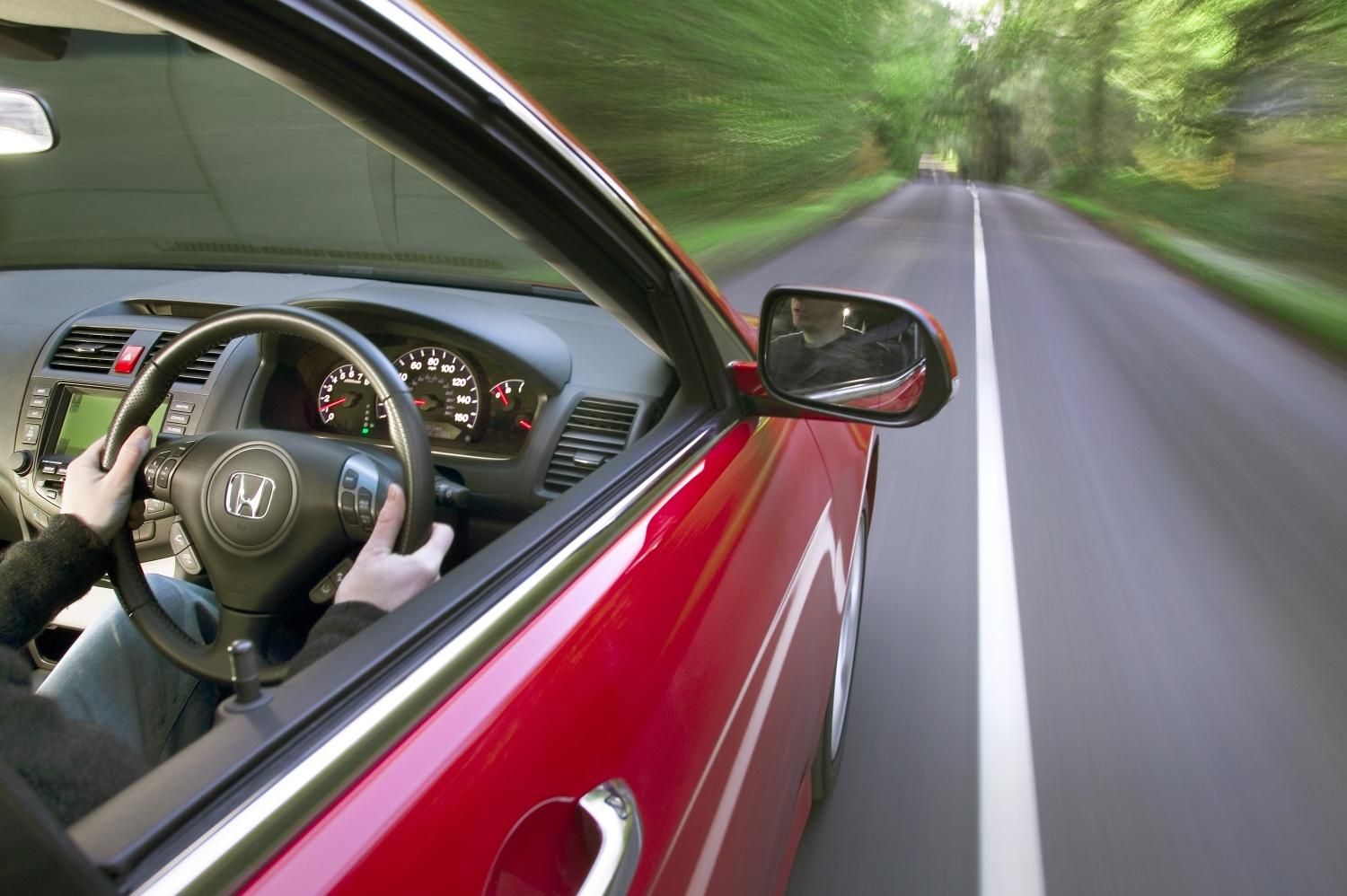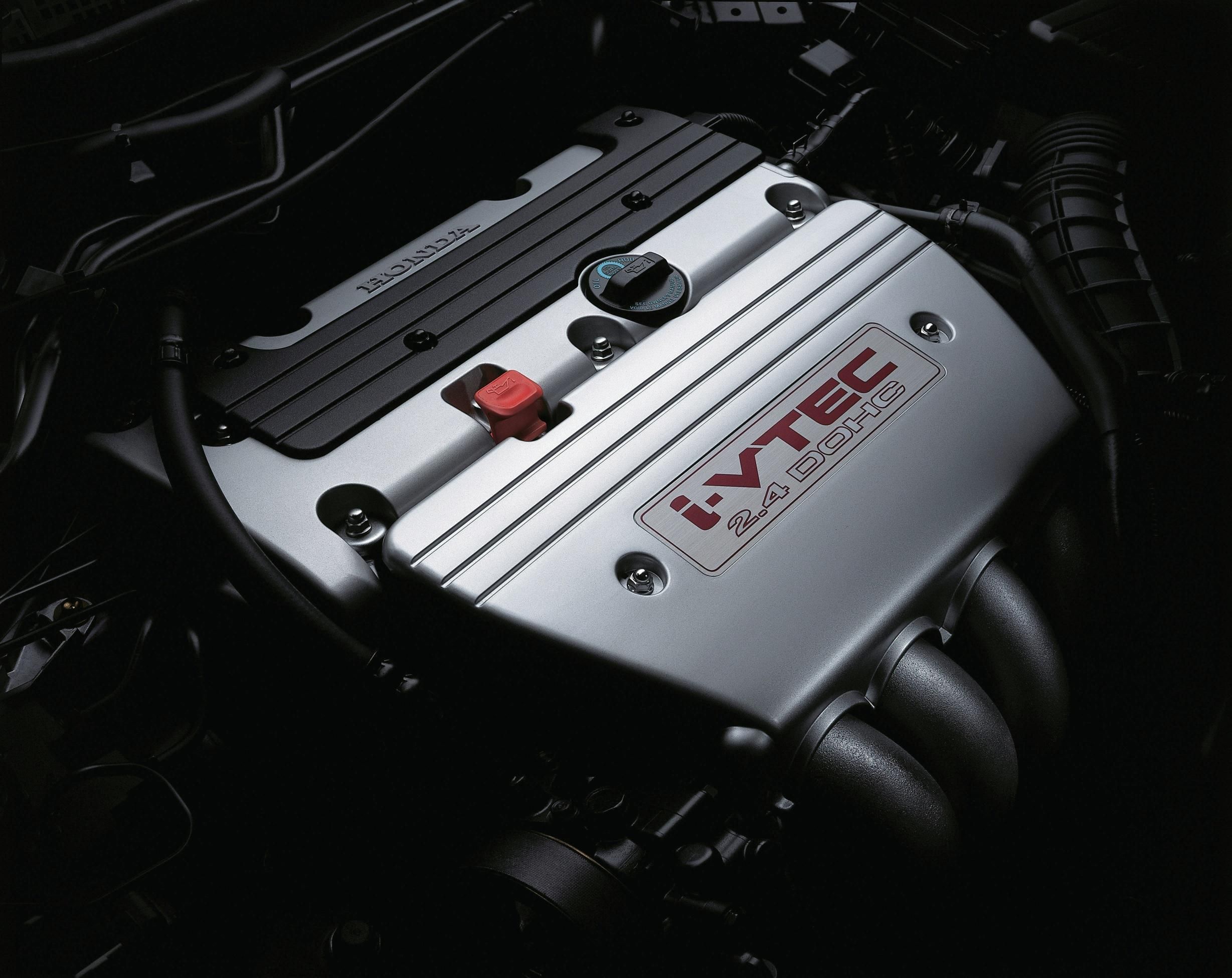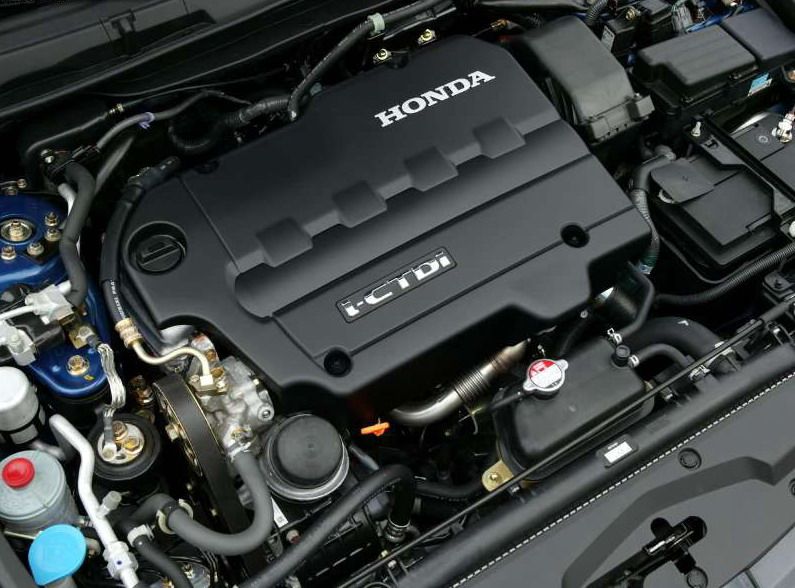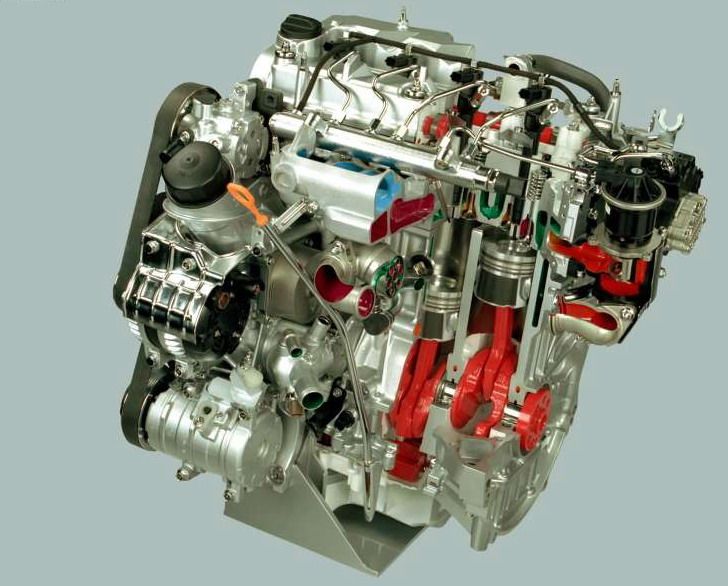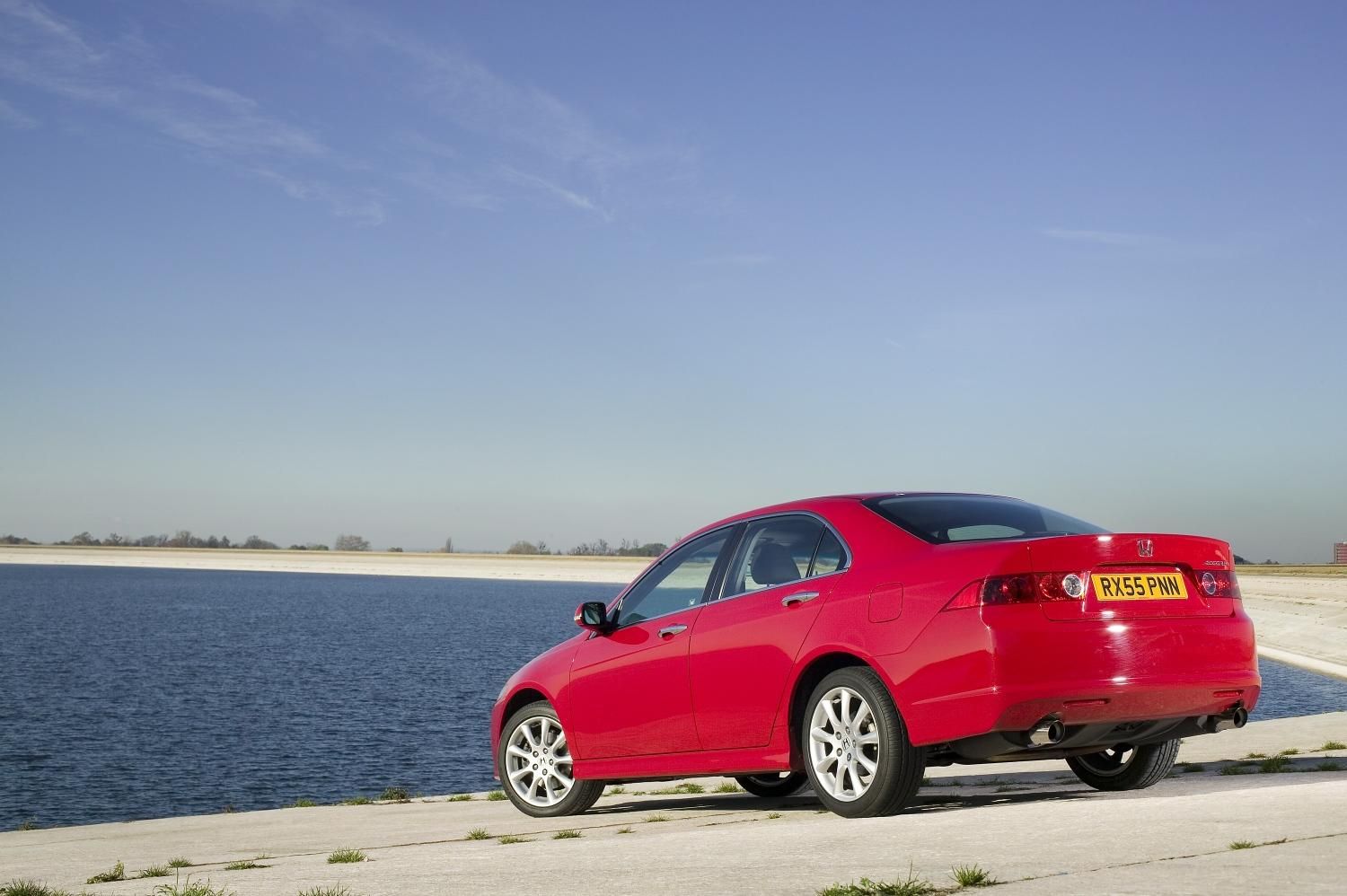Also making its debut at the Frankfurt Motor show is the updated Accord. The award winning premium/quality D-segment contender has undergone a facelift for 2006. As well as exterior and interior design alterations, the new Accord is injected with a host of significant technologies, most notably Honda’s Advanced Driving Assist Systems (ADAS) comprising of Lane Keeping Assist System (LKAS) and Adaptive Cruise Control (ACC) technology. It also gets a voice recognition satellite navigation system with the RDS (Radio Data System) function, which helps the driver avoid road congestions.ADAS is available as an option on the 2.4 Executive automatic right-hand-drive model.
Lane Keep Assist System (LKAS)
This technology is a European first and supports the driver in maintaining the car within the same lane. The LKAS identifies the boundaries of the vehicle’s lane by processing images from a camera mounted behind the windscreen. It then calculates and provides the optimum steering torque to help keep the vehicle in the centre of the lane. The system can work at speeds which suit European road usage conditions (45mph to 112mph).
The system automatically switches itself off after a warning if it fails to recognize driver’s input on the steering wheel, in order not to promote hands free driving.
Adaptive Cruise Control (ACC)
The ACC assesses driving conditions using data from a millimetre-wave radar—mounted inside the front grille of the car—that measures the distance to the vehicle ahead, along with data from speed and yaw rate sensors. It automatically regulates both the speed of the car and its distance to the vehicle in front, thereby reducing the burden of motorway (or similar road) driving and enhancing driver comfort and safety.
For a fuller explanation on both LKAS and ACC technology please refer to the safety section of this information pack.
After a desired speed is set, the system will maintain that speed as long as it detects no vehicles in front of the car. If a vehicle is detected, the system automatically slows the car down and keeps it at a predetermined distance. Once that vehicle changes lane or the distance increases again and the system can no longer detect it, then the previously set speed is resumed.
Other modifications
The main exterior alterations are concentrated on the front area of both the saloon and Tourer versions of the Accord. These include a new front bumper, grille, hood and headlights. Both body styles also get new designs for the 16” and 17” alloy wheels.
Unique to the saloon are the rear styling changes which are a new rear bumper, rear combination lights, and a new side sill garnish. The Tourer also gets altered side sill garnish and chrome plating of quarter moulding, as well as roof rails, now longer than the outgoing model, as standard equipment.
The changes inside the cabin are common to both body styles. The instrument panel has been newly designed and now includes a three-meter cluster being illuminated in a different colour. The steering wheel has a thicker grip and there is a subtle addition of a metal coloured ornamental ring around the horn pad. The shift knob has a new design on both automatic and manual transmissions.
Among the new equipment available is a voice recognition RDS navigation system. Through a series of set voice commands, the navigation system can be operated by the driver without taking his eyes from the road. Another useful addition to the navigation system is the RDS function; the system can recognise live traffic hotspots and recalculate the ideal route so as to avoid the congestion. There is also a hands-free telephone system with steering wheel mounted operational buttons and an automatic radio mute function whenever the telephone is in operation. A nice touch on the EX grade is the volume of the sound system being linked to the speed of the vehicle, so the higher the speed, the higher the volume of the music.
In terms of powertrains, the new Accord has the same engine line up as before; however, the 2.0 litre i-VTEC engine has undergone some changes to enhance driveability. It now utilises DBW (drive-by-wire) enabling both the maximum power and torque to be attained at 500rpm lower engine speed than before. The Accords powered by the award winning i-CTDi engine will now all benefit from a 6th forward gear.
-----
Design
It’s all in the details
Don’t panic: all the best bits of Accord remain. That distinctive body shape is largely unchanged, with its sharp, muscular lines and aggressive attitude. The same strong range of engines exists, from class-leading diesel, sporty 2.4-litre petrol and the improved 2.0-litre i-VTEC. Plus, the agile handling is still there – to guarantee an entertaining drive for the enthusiastic pilot.
So why change such an impressive product? Well, as Pamela Anderson has proved, even good models can be enhanced.
A series of minor tweaks have been made to refine and hone an already great car. And this document details those details (in detail)…
EXTERIOR STYLING
Through a process of steady evolution, the Accord’s exterior appearance has become more refined, sporty and aggressive.
Front end
The biggest change at the driving end is the redesigned bumper, which has been sculpted around the Accord body, exaggerating that distinctive aggressive image and giving the car a low and wide stance.
This new-look bumper works in tandem with a fresh front grille design. The angular lines and style of the grille hint at the sporty characteristics of both engine and chassis, while the chrome finish points towards the higher standards now expected of Accord.
The new bumper also improves the overall aerodynamic shape of the saloon, therefore helping the Accord deliver a more smooth, quiet and efficient drive.
All models are now equipped with innovative, hi-tech flat windscreen wipers which increase glass-clearing efficiency while reducing drag and thus wind noise.
Type-S model Accords get a slightly resculptured bonnet to reflect the car’s sporting/performance position in the range.
Rear end
At the back, the changes are as subtle, but have a similar overall effect. The saloon rump gets a redesigned bumper that’s lower and broader than before, and the rear light clusters have been mildly-tweaked.
The profile view of the Accord is also improved, with new side sill trim added to give a ground-hugging, more sporty look.
Wheels
To complement the various updates to the body styling, Honda designers have created a selection of new alloy wheels for the range.
Sport and EX models now wear a brand-spanking 16-inch seven-spoke design of rim that’s a lot more classy than the old five-spoke wheel. Meanwhile, a new 17-inch alloy with nine-spokes is available as standard on the Type-S models and the ADAS-equipped 2.4 EX, and as an option on all other cars in the range.
Tourer
As well as receiving the revisions made to the front half of all Accords, the popular Tourer estate version of the car gets some extra improvements for 2006.
The side sill trim is slightly different to that of the saloon, but at the back there’s more to look over, notably the chrome plating of the rear-quarter window surrounds and the standard roof rails. These really enhance the appearance of the car when viewed in side profile. With the addition of the chrome inserts, the rear of the Accord blends more smoothly into the rest of the body, and the overall size of the car appears much smaller.
Many will have already experienced the competent handling of the Tourer – a car that feels extremely agile for its size. This sporting character is made manifest with a new rear roof spoiler that incorporates an additional brake light.
Paint
The new pallete features a brand new paint: Dark Mocha Pearl. This powerful, confident colour has been chosen to suit the Accord’s lines and curves, and it perfectly suits the car’s high-profile, executive image.
The other new hues are revised versions of existing paints: Alabaster Silver Metallic; Blueish Silver Metallic; Royal Blue Pearl.
The following paints will continue to be offered to customers: Nighthawk Black Pearl; Milano Red; Deep Green Pearl; Graphite Pearl; Arctic Blue Pearl.
INTERIOR STYLING
Perhaps the most striking advancements to the 2006 Accord are inside the cabin, where equipment and trim levels have been improved to suit the enthusiastic driver and increase comfort levels.
The steering wheel rim is thicker in diameter, providing a chunkier grip to give the feeling of more control. The centrally-located Honda ‘H’ emblem is now embedded into the wheel and is surrounded by a circular chrome bezel. The wheel also has a sporting thumb ‘hook’ design which not only helps it look good, but is considerably more ergonomic.
Similarly, the gear-knob shape has been altered to a ‘gun-grip’ style, which better fits the contours of the hand, and it’s available in either a sporty alloy material, or with a leather covering.
Interior trim finish options have expanded to include a stylish metal-like finish on inserts and the centre console, or a classy new wood-effect finish.
To enhance both the form and function of the instrument panel, Honda designers have restructured the information display into a three circle arrangement. Three key colours of red, blue and white are also used for the 2006 model cars to ensure the info is clear and easy to read.
The Sport dash displays, meanwhile, are tinted with orange lighting in accordance with Honda tradition.
Much-needed on the Tourer model was an internal switch for the power tailgate, that could previously only be operated via the key fob. The new switch is found to the right of the steering column.
-----
TECHNOLOGY
For 2007, the Accord is injected with a host of significant and ground-breaking gadgets to increase driver comfort and safety.
The most notable of these is Honda’s Advanced Driving Assist System (ADAS), which comprises Lane Keeping Assist System (LKAS) and Adaptive Cruise Control (ACC) technology. These state-of-the-art driving aids are – at present – only available on the Accord ADAS model, a range-topping version of the 2.4 EX with automatic transmission.
LKAS – Lane Keeping Assist System
LKAS recognises the lane that the vehicle is travelling in using the images from a camera mounted inside the upper front windshield and applies the appropriate input to the EPS (Electric Power Steering) to help keep the car in its lane, thereby reducing the burden of motorway (or similar road) driving and enhancing driver comfort and safety.
How it works
The LKAS identifies the boundaries of the vehicle’s lane by processing images from a C-MOS camera mounted behind the windscreen. It then calculates the optimum steering torque — a combination of human input (minimum 20 per cent) and the assisted steering torque (maximum 80 per cent) — to keep the vehicle in the centre of the lane. A continuous beep sound will be emitted when the vehicle is about to cross the lane marking.
The Lane Keeping Assist System operates when the following conditions are fulfilled:
- on roads with left and right lane boundary markings (where markings are clear and visible)
- on motorways or roads that are equivalent to motorways (excluding sharp curves/bends)
- at vehicle speeds between 45 and 112 mph
- driver has to keep contact with the steering wheel — if the system fails to recognise driver’s inputs on the steering, it switches itself off
- side indicators are not activated
- steering torque generated by the driver does not indicate imminent lane change manoeuvre
- only operates on bends that have a less than 200 metre radius, any tighter than this and too much steering torque is required from the LKAS system
ACC – Adaptive Cruise Control
Adaptive Cruise Control uses information from a millimetre-wave radar (mounted inside the front grille) to measure the distance to the vehicle ahead, while vehicle speed and yaw rate sensors detect the vehicle’s driving parameters.
In addition to maintaining a set speed, as with convention cruise control, ACC is also able to automatically regulate both the vehicle speed and its distance to the vehicle ahead travelling in the same lane, thereby reducing the burden of motorway (or similar road) driving and enhancing driver comfort and safety.
How it works
The millimetre-wave radar recognises the presence and the speed of the vehicle ahead, thus calculating the distance separating the two. The analysis of the impulses from the radar and their frequency variation makes it possible to calculate the exact distance and the relative speed between the vehicles. When this distance is reduced to below a predetermined value, the system instantly decelerates the vehicle through throttle control and, if necessary, by application of the brakes. In instances where quicker deceleration is required — such as being cut-off by another vehicle or sudden braking by the vehicle in front — the system will alert the driver with a warning light and a buzzer to prompt the driver to apply the brakes. If the vehicle ahead changes lane or the distance increases again, then the system increases the vehicle speed to the predetermined value.
In order to allow a perfect control of the system activity there is a specific display in the instrument panel, indicating when a vehicle ahead is detected, when the radar sensor is out of commission and when there is insufficient braking capability as well as the selected cruise control speed and the selected distance to the vehicle ahead.
Multi Function Driver Computer
For the first time, the complete Accord range gets Honda’s Multi Function Computer, which displays key information to the driver including average speed, average fuel consumption, instant fuel consumption, outside temperature and fuel range. Warning messages and alerts are also delivered via the easy-to-read screen.
Not only that, but the Driver Computer could be the first to save relationships from impending doom; the system can be programmed to remind the pilot of important events or dates - an anniversary or birthday for example. How useful is that?Personalised greetings, messages or lists can also be entered to then appear at specific times.
Voice Activated Satellite Navigation (VASN)
It’s easy to realise the beauty of voice-controlled route guidance: issuing commands without taking your hands off the wheel is not only a lot safer, it also makes life much easier for the driver.
Getting home using the VASN kit fitted to new Accord (as an option on Type-S, EX and Sport models and as standard on EX ADAS) is simple. Just press the Communications button on the steering wheel, tell the system you want to go ‘home’ and it will tell you the best way to go. Similarly, if you want to find the nearest restaurant, pub or petrol station just say what you need and VASN finds the closest location to you and directs you there.
The new Accord navigation system also features a much-improved pressure-sensitive touch screen, with greater sensitivity and ease of use.It also has all the usual, useful functions of standard satellite navigation systems, so you can manually enter a destination, or choose an area to head towards, or simply follow the map display.
The audio system also has a clever new function. The already hi-tech MP3 equipment now has a speed-sensitive volume option, which means the driver’s hands can remain on the wheel while the system adjusts volume of the audio dependent on the vehicle’s speed.
Hands Free Telephone (HFT)
Using Bluetooth wireless technology, Honda’s HFT system allows lawful communication on the move using a mobile phone.A series of speakers and microphones installed in the car can connect to any Bluetooth-enabled communications device, allowing calls to be made while driving. The system works even if your phone is in a bag or briefcase.
Vehicle Stability Assist
The 2006 Accord already has a capable chassis and stiff bodyshell to heighten responses to driver input and enable sharp precision on the road.And now Honda’s VSA system finds its way onto all Accords in the range. Vehicle Stability Assist is designed to help the driver maintain control during cornering, acceleration and sudden collision-avoidance manoeuvres.
Sensors that detect steering angle, yaw rates and wheel speed all work together to help prevent severe understeer or oversteer during cornering.In addition, all models remain equipped with ABS, EBD and brake assist as standard.
-----
ENGINES AND TRANSMISSIONS
The range of powerplants on offer remains the same: two strong i-VTEC petrol engines and Honda’s acclaimed i-CTDi diesel.
2.0-litre i-VTEC
But Honda engineers have worked hard on the 2.0-litre DOHC i-VTEC unit to improve performance and enhance economy. Firstly, and most importantly, the 2.0-litre now has Drive By Wire throttle control - which means the technology is now in use on all Accord engines.
The conversion to DBW works in conjunction with other engine modifications to improve overall performance, particularly in the mid-range.
New camshafts increase torque in the 3000-4000rpm area, meaning more is available in usual driving conditions. A single intake manifold also helps boost the pulling power.
As a result, overtaking moves in fourth gear (at approximately 50-70mph) are made significantly easier.
2.4-litre i-VTEC
The 2.4-litre i-VTEC engine remains in the same spec, and still delivers a cracking 190PS and a respectable torque figure of 223Nm. Matched to a 6-speed manual gearbox it returns 31.4mpg in the combined cycle (saloon).
2.2-litre i-CTDi diesel
The most refined oil-burner in its class continues in Accord, but for 2006, Honda’s remarkable diesel is coupled to a 6-speed manual gearbox. The extra cog allows for lower ratios in third, fourth and fifth gears, which in turn means better in-gear acceleration.
A taller sixth gear also gives a far more comfortable, and more fuel efficient cruising speed.
Alongside the 6MT gearbox, the i-CTDi takes another step forward, and works hard to defend its position as best diesel engine in the sector.
REFINEMENT
Although already a well-polished package, for 2006 the Accord has been honed further to make the driving experience even more refined.
Cabin refinement has been significantly enhanced by modifying front suspension arms and improving the sound insulating materials in the boot, behind the rear bumper and in the doors.
In addition, the change of wheels to a different style allowed engineers to a design of rim that reduced medium frequency noise.
Back outside the car, innovative ‘flat’ wipers also help to reduce wind noise, and perhaps more importantly, contribute to a more efficient and aerodynamic shape with less drag.

